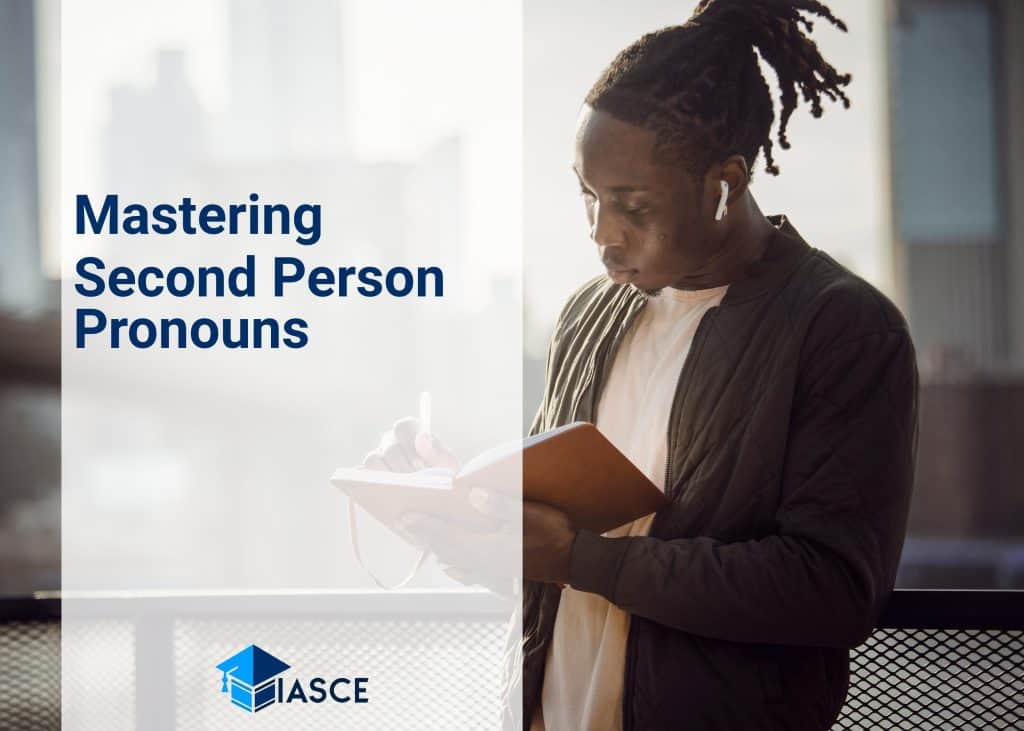If you’ve ever found yourself tangled in the web of English pronouns, particularly those pesky second person ones, you’re not alone. It’s a common struggle amongst language learners and even native speakers. I’m here to unravel that knot and make it easier for you to master the use of these crucial linguistic tools.
English pronouns are far from simple; they can be pretty tricky to get right, especially when we dive into second person pronouns. These are the words we use every day – words like ‘you’, ‘your’, ‘yours’ and ‘yourself’. They seem straightforward enough but there’s more than meets the eye.
In this comprehensive guide, I’ll decode all things related to second person pronouns – their usage, grammar rules, distinct forms and much more. So buckle up as we embark on an enlightening journey through the realm of English language usage!
Understanding Second Person Pronouns: What Are They?
Ever wondered about those tiny words that make a world of difference in a conversation? I’m talking about second person pronouns. These are the words we use when we’re addressing someone directly. They’re crucial to English language usage, and mastering them can take your communication skills from good to great.
In the English language, “you”, “your”, “yours”, “yourself” and “yourselves” are considered second person pronouns. Simple as they may seem, these five words carry a lot of weight in conversation. Let me break it down for you.
- You: This is the primary second person pronoun used for both singular and plural cases. For example, “You are learning fast”.
- Your: It’s used to indicate something belongs to or relates to ‘you’. For instance, “This is your book.”
- Yours: The possessive form of ‘you’, used without a following noun. You’d say, “The choice is yours.”
- Yourself/Yourselves: These reflexive forms of ‘you’ are utilized when ‘you’ are both performing and receiving an action. Examples include “Take care of yourself,” or “Make yourselves at home.”
Second person pronouns aren’t just about who’s being spoken to – they also have an impact on the tone and level of formality in our speech or writing.
At times we might find ourselves using these terms incorrectly due to confusion with other types of pronouns or simple grammatical errors. That’s where my expertise comes into play! With knowledge and practice, anyone can master their usage – including you!
So there you go—a crash course on understanding what second person pronouns are all about! Keep practicing and soon enough you’ll be using them like a pro!
Harnessing the Power of ‘You’: Practical Uses in English
Let’s dive right into the world of second person pronouns, particularly the most common one: ‘you’. This little word packs a big punch in English communication. It’s versatile, adaptable, and oh-so-useful.
‘You’ is unique because it can be both singular and plural. If I’m addressing one person or a crowd, ‘you’ fits perfectly. It’s like a chameleon, blending seamlessly into various contexts without confusing the listener or reader.
Here are some examples to illustrate this point:
| Context | Sentence |
|---|---|
| Singular | “Hey, you! Can you pass me that book?” |
| Plural | “Hello everyone. You’re all welcome to join the party.” |
In addition to its adaptability in terms of number, ‘you’ also takes on different roles within sentences. It can function as a subject (“You are amazing”), an object (“I saw you at the park”), or a possessive (‘Your idea is brilliant’).
But wait – there’s more! ‘You’ has another superpower: implied usage. Sometimes we drop ‘you’ from sentences when it’s understood who we’re talking about. For instance:
- “Get back here!” instead of “You get back here!”
- “Watch your step!” instead of “You watch your step!”
This hidden use of ‘you’, known as imperative form, makes commands more direct and forceful – pretty cool, right?
However, remember that powerful tools need careful handling. Overuse of ‘you’ can sound accusatory or confrontational (“You always forget my birthday”, “You never listen to me”). To avoid this pitfall, consider using passive voice or focusing on actions rather than people.
With these points in mind, harnessing the power of ‘you’ shouldn’t feel as daunting anymore! The key is practice – don’t be afraid to experiment with different sentence structures and contexts until using ‘you’ becomes second nature.
Final Thoughts on Mastering Second Person Pronouns
Cracking the code of second person pronouns? It’s not as daunting a task as it may seem initially. With some practice and keen attention to detail, anyone can master these intriguing aspects of the English language.
Let’s revisit a few key points:
- Understanding when to use ‘you’, ‘your’, ‘yours’ and ‘yourself’ correctly is crucial. Each of these has its own distinct role in sentence construction.
- Listening to native speakers or reading English texts can be great ways to observe and understand how second person pronouns are used in daily communication.
- Practice makes perfect! The more you engage with the language, whether through writing or conversation, the better you’ll get at using second person pronouns accurately.
I’ve found that people often mix up ‘you’re’ and ‘your’. Remember, “you’re” is a contraction of “you are”, while “your” indicates possession.
Here are some examples for clarity:
| Incorrect Usage | Correct Usage |
|---|---|
| Your beautiful! | You’re beautiful! |
| I love you’re smile. | I love your smile. |
Second person plural pronouns (like ‘you guys’, ’y’all’, or ‘you lot’) can vary based on regional dialects and cultural context. Be aware of these differences when communicating with diverse groups.
Remember, mastery comes over time with persistent effort and patience. Keep practicing, stay curious about learning, and don’t shy away from asking questions if you’re unsure – that’s how we all continue to grow our skills.

